Wednesday, January 23, 2008, 06:10 PM
- Models
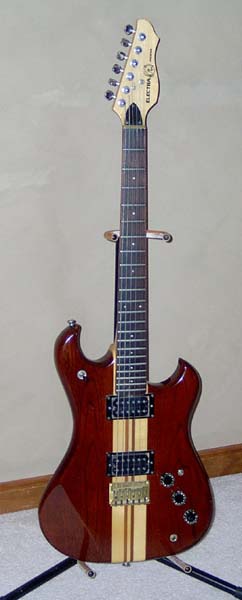
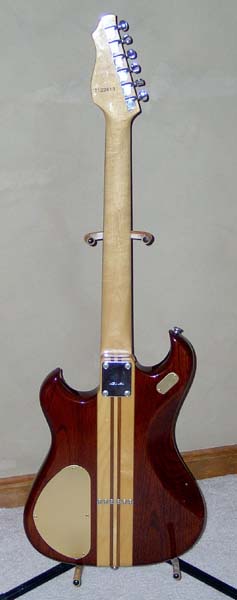
Bolt neck double cutaway with laminated ash, maple and walnut strip body, maple neck, chrome hardware, brass nut, brass hardtail bridge and dual humbuckers with toggle switch for coil tap, brass knobs.
When the Electra Phoenix first appeared in late 1980, there were the standard 2- and 3-pickup models with pickguards, and there were also two deluxe models with bodies of dark brown ash with laminated strips of maple and walnut at the center. No doubt one or two of these would be ordered as premium display attractors but the lower priced models were what sold the most.
The laminated body follows the identical stripe pattern with many other Matsumoku-made guitars of the time, including Aria Pro, Westone, Washburn and Skylark models.
Ironically, the laminated body is sometimes mistaken for an imitation of a neck-through guitar, which it is not. Excellent bolt-neck that it is, it need not pretend. Matsumoku had raised the art of making composite chunks of hardwood out of smaller to a fine degree, and these laminated bodies are made with all the care and attention of a flagship model.
The X149 is identical to the X150 in every respect except that it does not have powered EQ. The tone knob is a conventional tone knob, and it has only one toggle switch, for coil tap. It can also be recognized by the lack of a brass battery cover at the base of the back, which powers the EQ in the X150.
The X149 appears to be the rarer of the two deluxe models, probably because if youíre ordering a deluxe model, why omit the fancy electronics? Yet at the time onboard powered EQ was exotic- (at the time Fender had not even upgraded strat 3-way to 5-way switches yet- that was strictly custom) So itís not hard to imagine a few conservative music store owners who had tried out powered EQ, or hadnít, and found it useless. So offering a version without the powered EQ seems reasonable, if not popular.
Today the X149 is one of the finest of the Electra Phoenix family, its familiar controls and excellent tone matched by the fact that flagship models, especially in the early 80ís, seemed to have been given extra hands-on attention, their lines and setup are generally especially good among the Phoenixes.
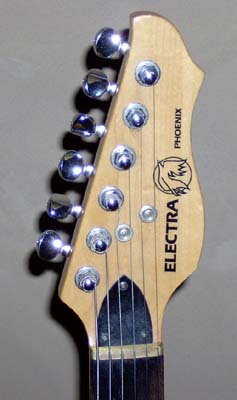
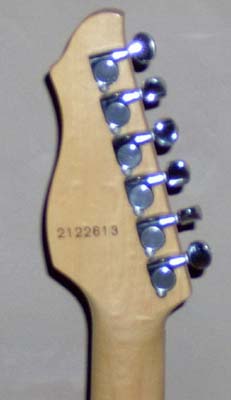
permalink
| related link
Wednesday, January 23, 2008, 06:06 PM
- Models
Bolt neck double cutaway with ash body, maple neck, chrome hardware, and three single coil pickups with 3-way selector and fat switch (middle on), brass knobs.
First Series:
X145R (S-S-S)(red metalflake)
X145B (S-S-S)(blue metalflake)
Second series:
X145VS (S-S-S)(vintage sunburst)
The first series was a deluxe version of the X130 with special metallic paint and black pickguard like the X130, brass nut, trem bridge, brass knobs.
Most had a brass '1982 commemorative anniversary' plate on the back of the headstock with an additional serial number.
The second series was almost a different model entirely- no pickguard, it had pickups mounted flush against the body, like all Phoenix models to follow. It was the only model in all the Electra Phoenix/ Westone Spectrum series to be available in a sunburst finish.
Wednesday, January 23, 2008, 05:57 PM
- Models
Bolt neck double cutaway with maple body, maple neck, chrome hardware, graphite nut, Bendmaster FT trem bridge with locking nut, and and dual humbuckers with coil tap toggle switch with 3-way selector and pull-switch knobs for coil tap and phase reverse, brass knobs.X140BK (H-H) (black)
X140SW (H-H) (snow white)
X140RD (H-H) (red)
The Spectrum DX was introduced in 1985 with the new line of Electra Phoenix-based models renamed Westone Spectrum. Unlike the Phoenix models which came in a bewildering variety with mysterious code numbers, the Spectrum models were clearly divided into recognizable price and feature ranges: ST (standard) was the budget line, DX (deluxe) was a slightly higher priced line which offered upgraded hardware but was still lower in price than the LX (pro) series which was a continuation of the classic X189 (H-S-H). The DX gave an alternative for those who wanted premium quality at the lowest price possible.
The DX succeeds at all that and continues to be one of the best bang-for-the-buck models, going for low prices yet offering a great variety of tonal range and the great neck and pickups the Phoenix and Spectrum were known for. The polyurethane finish of these models is nearly indestructible, so they tend to stay in good shape.
X140 is one of the few model numbers to be used by two different models- confusingly the number returned to use in 1985 after the Electra Phoenix had been renamed the Westone Spectrum. The Spectrum DX was numbered X140, but instead of being an updated (S-S-S), the DX was really an (H-H) like the X135 with the upgraded hardware of an X189.
Wednesday, January 23, 2008, 05:47 PM
- Models
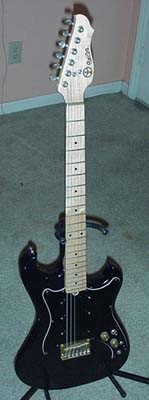
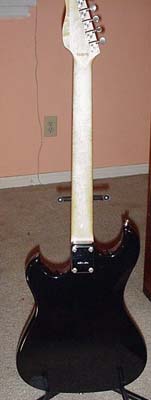
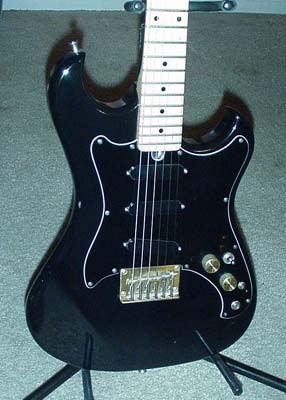
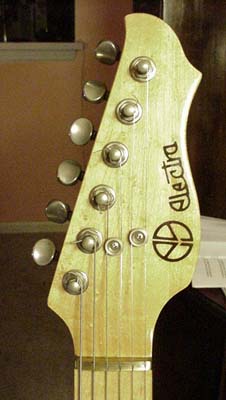
Bolt neck double cutaway with ash body, maple neck, black pickguard, chrome hardware, brass nut, brass hardtail bridge with strings through body, and three single coil pickups with 3-way selector and fat switch (middle on), brass knobs.
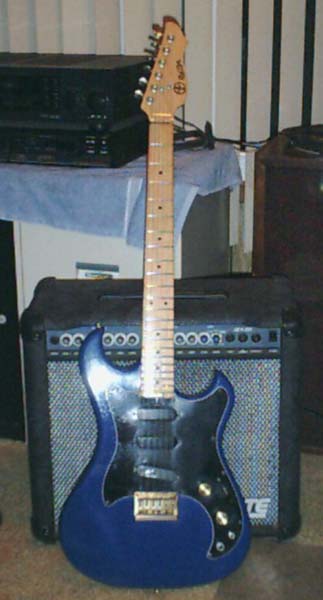
Standard models:
X140N (S-S-S)(natural)
X140S (S-S-S)(walnut stain)
X140B (S-S-S)(black)
Custom models had premium tuners, Canadian rock maple bodies:
X140W (S-S-S)(white)
X140R (S-S-S)(red)
X140BL (S-S-S)(blue)
The X140 was one of the first Electra Phoenixes to appear in late 1980. The standard models have wonderfully resonant figured ash bodies, and the brass nut and hardtail string-though bridge add to the great tone.
X140 is one of the few model numbers to be used by two different models- confusingly the number returned to use in 1985 after the Electra Phoenix had been renamed the Westone Spectrum. (The Spectrum DX was numbered X140, but instead of being an updated S-S-S, the DX was really an H-H like the X135 with the upgraded hardware of an X189.)
From the 1981 pricelist:
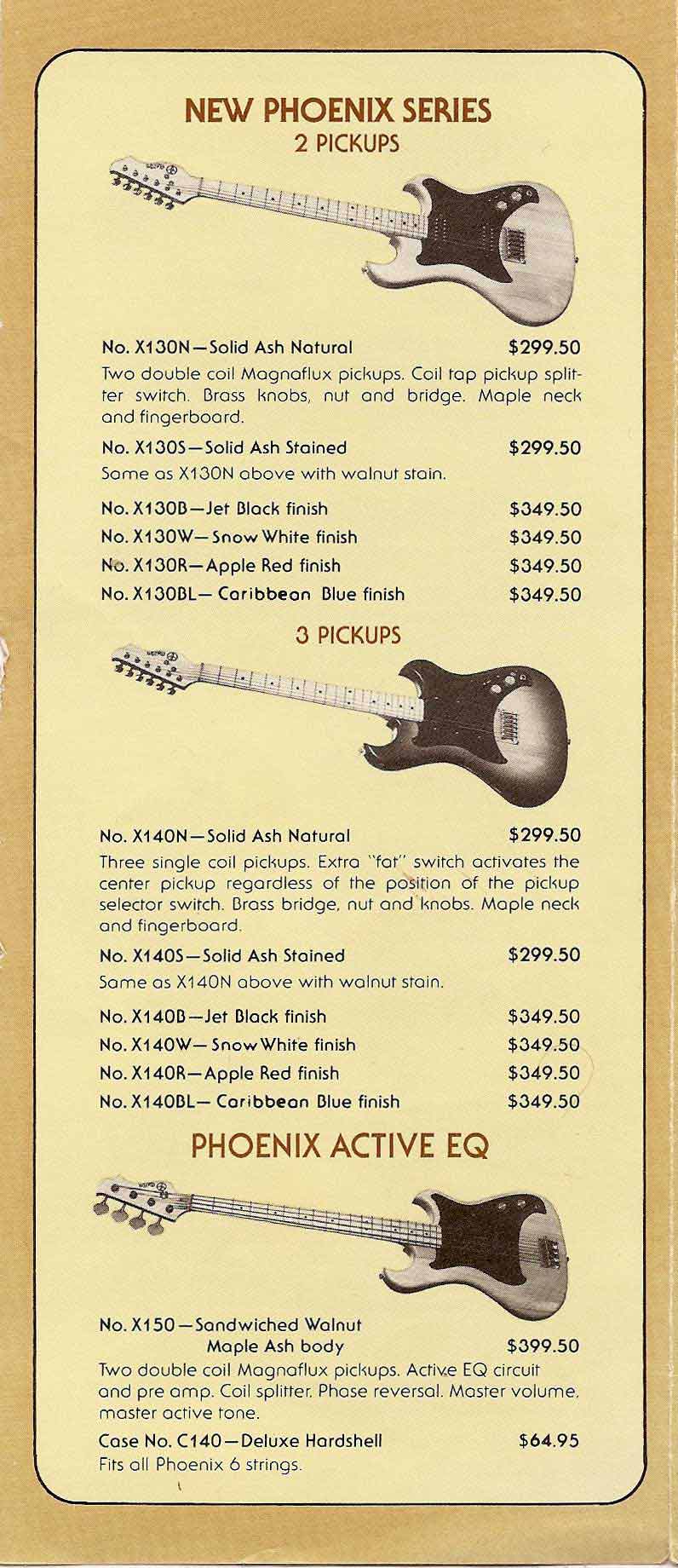
Wednesday, January 23, 2008, 04:19 PM
- Models
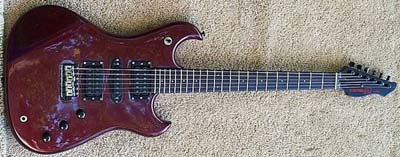
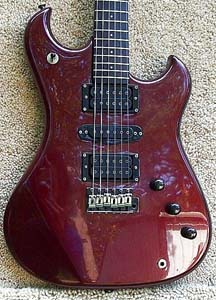
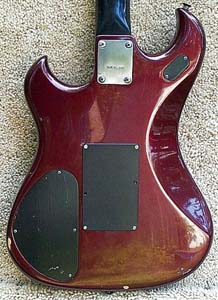
Bolt neck double cutaway with maple body, maple neck, rosewood fingerboard, black hardware, graphite nut and tekglide (vintage style) bridge, two humbuckers, one single-coil pickup with three pull-switch knobs (V-T-T) for coil tap, fat (center on) and phase; and 3-way selector switch.
X185RM (H-S-H)(rose metallic)
X185BL (H-S-H)(blue burst)
X185GR (H-S-H)(graphite)
X185SS (H-S-H)(Silverstone= metallic bronze)
X185RD (H-S-H)(red)
The X185 marked the debut of Tom Presleyís H-S-H wiring plan, the result of his work in the 60ís on experimental wiring. It combined the best of different kinds of pickups to produce a remarkably versatile sound. Best of all, the controls were intuitive, allowing the guitarist to merely twiddle or to very deliberately shape a tone.
Other guitar companies, notably Ibanez, have also released H-S-H guitars, but none with this particular configuration before or since.
The full potential of the H-S-H was also made possible by innovative unbalanced coil pickups that Tom had developed in concert with Matsumoku technicians. Normal humbuckers have a pair of equal coils, and coil tapping one out leaves a single remaining coil that isnít very much like the rich overtones of a strat or tele single coil, itís just thin.
The new MMK45 pickups that were included in all the Electra Phoenix had a pair of coils with different cores, magnets, and windings. One coil was wound for rich high frequencies, the other for lower response. The effect was akin to upgrading from a single stereo speaker to a woofer and tweeter- both ends were better represented.
When coil tapped, MMK45ís drop the bass coil, and the remaining treble coil is more like a tele neck pickup- strong and sweet.
By using humbuckers that would coil tap this way, the H-S-H plan spanned a tonal range including those traditionally held by tele and LP players. This was activated by pulling out the volume knob, which in the 83 models was a nice chunky speed knob with notched edges.

The second knob activated the center pickup, which was a strat-like single coil pickup that added the rich piano-like overtones of an overwound single coil. Add that to any of the other combinations and you spanned the tonal range traditionally held by strat players.
Finally, the third knob, which was also the bridge tone knob, pulled out to reverse the phase of the bridge pickup. This was a sound that had suddenly become popular in the 80ís pop radio- think Joe Walsh- although it was a wiring trick that other greats had used. Somebody noticed that if you put the 3-way selector switch inbetween positions on a strat, it phase reversed one of them, giving this funky quack sound.
In 1983, Fender (who had stopped making guitars in America and had licensed to Fuji Gen Gakke in Japan) offered fot eh first time a strat with a 5-way switch so that those sounds could be deliberately selected.
The same year, Electra Phoenix offered the X189 with more wiring variations and tonal range than any guitar before.

Best of all, you could use the variations without understanding them at all. By experimentation you find out, say, that by pulling the bottom two knobs out you get a much wider treble-to-bass range when using the 3-way selector, so you dial that up and go without having to think about what youíve done or how it works.
What went wrong? Why didnít such innovation take off as the next great thing? Perhaps it should have. Probably the greatest strike against Electra Phoenix was that it was a $400 guitar. This was halfway between the $125 starters and the $800 and up Ďseriousí guitars. Real rock stars played the serious stuff, we thought.
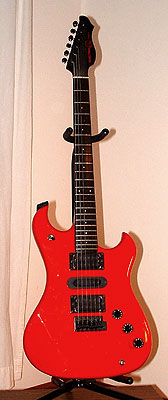
True to SLMís marketing strength, Electra was a brand that offered top-quality features at a mid-range prices included entry level models with serious student quality, no junk. Today we take it for granted that companies sometimes offer surprising quality in lower priced lines, and sometimes these things become standard.
But in the early 80ís imported guitars were still Ďjunkí, and people barely registered that Fender s were made by the same factories as Ibanez. The world was not looking to find innovation in low to mid-range guitars at that point.
And no doubt they were far ahead of their time. The average amateur guitarist in 1983 had no idea about phase reversed guitar wiring, and was skeptical that it really had anything to do with making music. A few did get it, and we treasured our Electra Phoenixes, adn they remain excellent versatile players today.

Back Next






